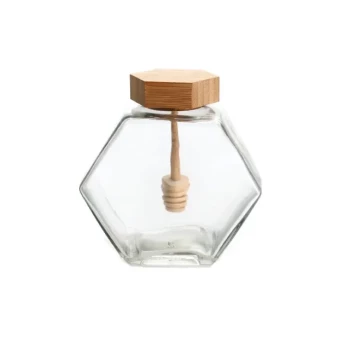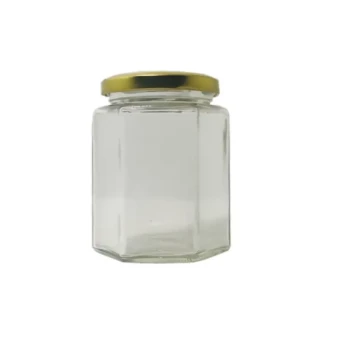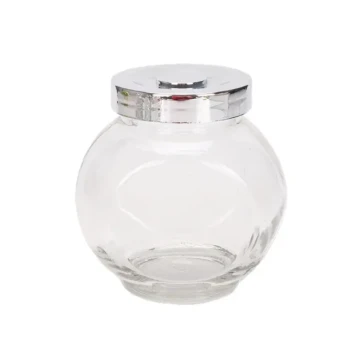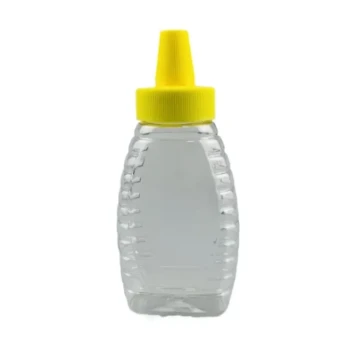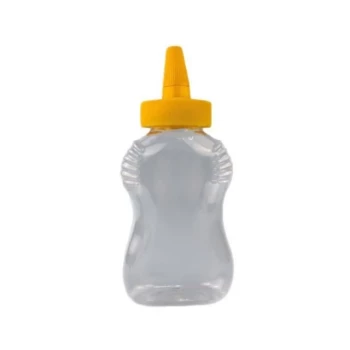For long-term storage, the ideal container for honey is a glass jar with a tight-fitting, airtight lid. This combination provides the best protection against environmental factors that degrade honey over time. Food-grade plastic containers are also a safe and acceptable alternative, especially for shorter-term storage or convenience.
Honey is remarkably stable, but its long-term quality hinges on one critical factor: isolation. The best container is one that creates an inert barrier, protecting the honey from its primary enemies—air, moisture, and chemical reactions.
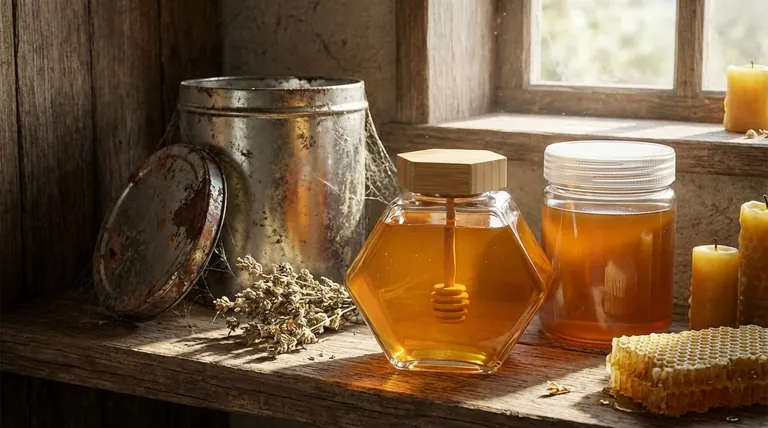
The Science of Choosing the Right Container
The material of your storage container directly impacts the preservation of honey's flavor, aroma, and consistency. The goal is to use a material that is non-reactive and impermeable.
Why Glass is the Gold Standard
Glass is the superior choice for archival storage because it is inert. This means it will not react chemically with the honey's natural acidity.
Furthermore, glass provides an impermeable barrier. It prevents moisture and oxygen from seeping in, which are key factors in preventing fermentation and degradation.
The Viable Alternative: Food-Grade Plastic
Food-safe plastic containers, including the one your honey likely came in, are perfectly fine for storage. They are lightweight, shatter-proof, and convenient.
However, for multi-decade storage, it's worth noting that plastic is slightly more permeable to air than glass. While safe, it is not the absolute best choice for indefinite preservation.
Common Pitfalls: Containers to Strictly Avoid
Using the wrong container is one of the few ways to actually spoil honey. Two factors are critical to avoid: metallic reactions and exposure to air.
The Risk of Metal Containers
You must avoid storing honey in metal containers. Honey is naturally acidic, and this acidity will oxidize and corrode metal over time.
This reaction can leach metallic flavors into the honey, ruining its taste and potentially making it unsafe for consumption. This applies to reactive metal tins as well as jars with unlined metal lids.
The Importance of an Airtight Seal
Honey is hygroscopic, meaning it naturally absorbs moisture from the surrounding air. A container that is not sealed tightly will allow ambient moisture to enter.
If the honey's water content rises too high (above ~18%), the dormant yeast spores naturally present can activate, causing the honey to ferment and spoil.
Making the Right Choice for Your Honey
Your storage strategy should align with your goal. While honey can last for centuries under ideal conditions, your choice of container ensures it remains exactly as you intended.
- If your primary focus is archival preservation: Use a sterilized glass jar with a tight-fitting, non-metallic lid, and store it in a cool, dark place.
- If your primary focus is everyday use and convenience: The original food-grade plastic container your honey came in is perfectly suitable and safe.
Properly stored, honey does not spoil; it simply waits.
Summary Table:
| Container Type | Best For | Key Consideration |
|---|---|---|
| Glass Jar | Archival, long-term storage | Inert, impermeable, best protection |
| Food-Grade Plastic | Convenience, short-to-medium term | Slightly more permeable to air |
| Metal Containers | Avoid | Risk of corrosion and metallic taste |
Need reliable, high-quality containers for your honey operation? HONESTBEE supplies commercial apiaries and beekeeping equipment distributors with durable, wholesale-focused storage solutions. Ensure your honey's quality from hive to market—contact our experts today to discuss your needs!
Visual Guide
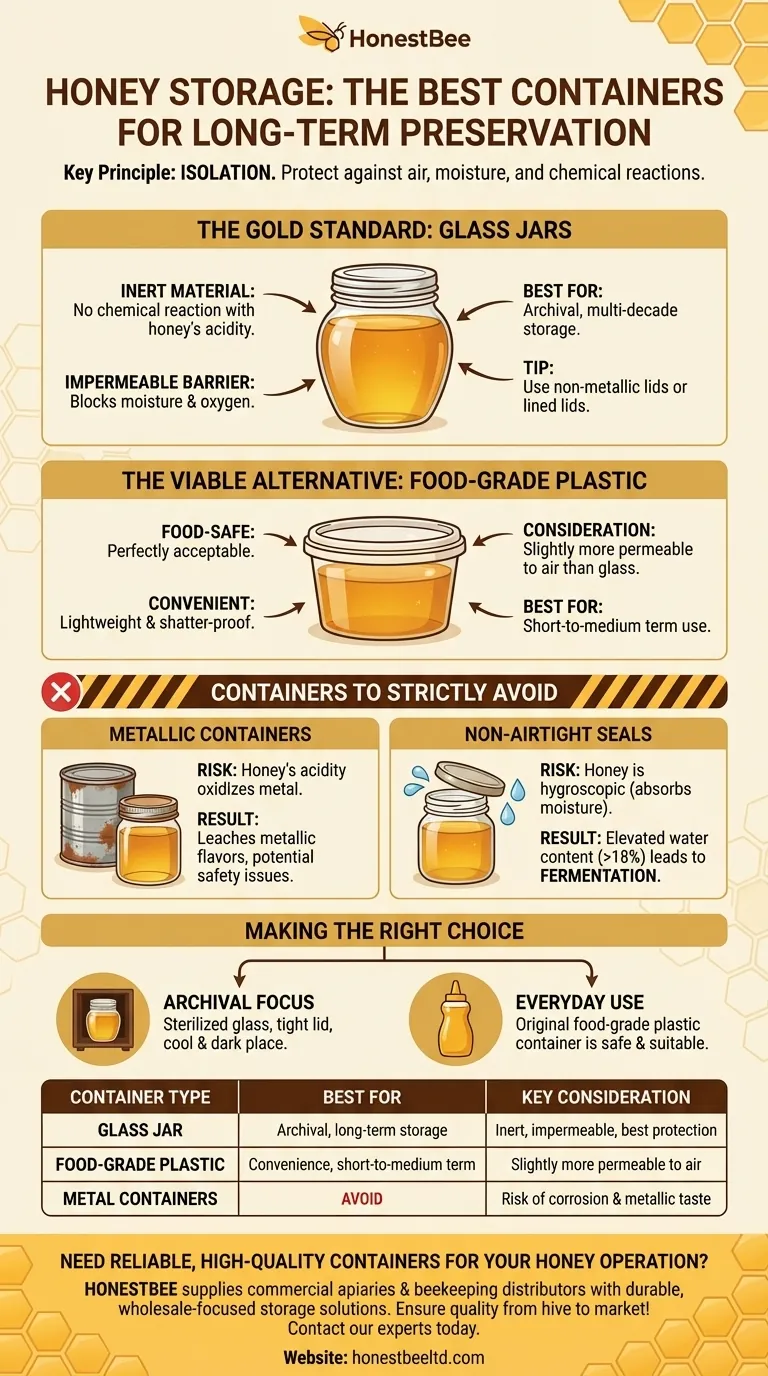
Related Products
- Hexagonal Glass Honey Jar with Wooden Lid Integrated Dipper Elegant Functional Storage
- Hexagonal Glass Honey Jars with Metal Lug Caps Elegant Versatile Packaging
- Classic Drum Shaped Glass Honey Jar with Airtight Lid
- Inverted Squeezable Honey Jar with No Drip Flip Top Cap for Easy Pouring
- Classic Beehive Honey Bottle Jar with Squeeze Dispenser Lid
People Also Ask
- How long can you store honey in a 5 gallon bucket? Preserve Quality & Safety for Decades
- Why should honey not be refrigerated? Preserve its natural texture and quality.
- What is the best container to store honey in? Preserve Purity & Flavor for Years
- What are the advantages of glass containers for honey packaging? Ensure Purity and Elevate Your Brand
- What types of containers are ideal for storing liquid honey? Preserve Quality with Glass or Plastic
